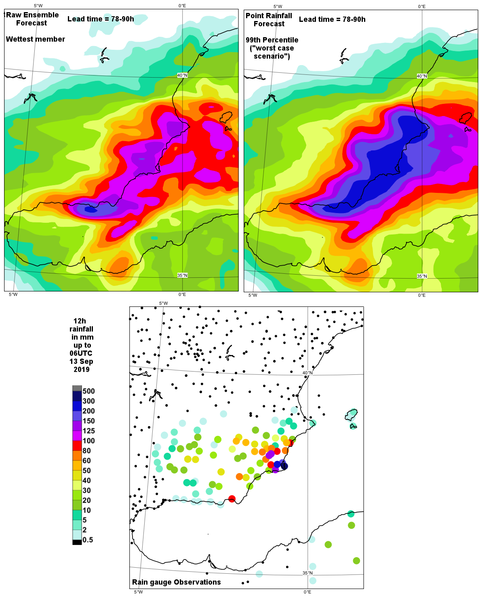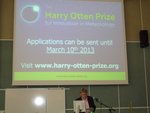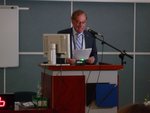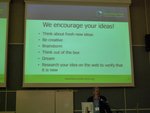1 January 2024
Farewell Pam Emch and Olivier Boucher; welcome to new board members Sue Ellen Haupt and Jean-Noel Thepaut
Our board member and chair Pam Emch resigned from the Harry Otten Foundation Board on 31 December 2023. She joined the board on 1 January 2018, and acted as chair in the last three years of her term. Pam has lead the promotion of the Harry Otten Prize call for proposals and the subsquent selections and awarding for two rounds, in 2021 and 2023. She put substantial extra effort to lead the prize selection during the covid-19 pandemic. Moreover she professionalsed our workflow and was also our connection to the AMS. Also Oliver Boucher rotated off from the Harry Otten Foundation Board on 31 December 2023, after a period of 6 years. As jury member he was always bringing in valuable arguments in the selection process. Moreover he acted as communication officer. We thank both Pam and Olivier for their efforts for the Harry Otten Foundation.
As successors of Pam and Olivier, Sue Ellen Haupt and Jean-Noel Thepaut joined the board on 1st January 2024. Sue Ellen is a Senior Scientist in the Research Applications Laboratory (RAL) of NSF NCAR, with a research focus on renewable energy prediction and modelling. She is also a Contributing and Founding Director of the World Energy and Meteorology Council (WEMC) and a Fellow of the American Meteorological Society (AMS). She was recently awarded the European Academy of Wind Energy (EAWE) Scientific Award for 2022. Sue has been active with the AMS, serving as Commissioner of the AMS Commission on the Weather, Water, Climate Enterprise; AMS Council; Chaired the Committee on Artificial Intelligence Applications to Environmental Science; and performed other service for AMS and other organizations. Jean-Noël Thépaut was the Director of Copernicus Services at ECMWF until December 2023. Prior to this role he was Director of the Copernicus Climate Change Service (C3S), the Head of Data Division and Deputy Director of the Research Department at ECMWF where his section developed data assimilation algorithms for Numerical Weather Prediction, the exploitation of satellite observations from operational and research Earth Observation platforms, and the development and production of state-of-the-art climate re-analyses. Jean-Noël is “ingénieur de la météorologie” from Météo-France. Jean-Noël is a fellow of the American Meteorological Society.
We wish Sue and Jean-Noel lots of success during their time on the board.
From now Gert-Jan Steeneveld will act as chair of the Board.
7 December 2023
Update from the 2019 Prize Winners – A New Method of Measuring Atmospheric Refractivity
Since the previous update, the following progress can be reported:
- A PhD student, Ollie Lewis, was successfully recruited to work mainly on data exploitation aspects of the new technique. His PhD has been funded by the H-O prize money, Exeter University and the Met Office. Ollie is now in his third year and, at the time of writing, has approximately 15 months of study time remaining.
- A joint Met Office/Exeter University team has been established to guide the project that includes experts in the established GPS-RO refractivity retrievals, which is similar to the new technique in that the basic measurement is of bending angle.
- Ollie has published a paper on the modelling work (Lewis et al, 2023a) and won the prize for the best student paper presented at a recent SPIE conference (Lewis et al, 2023b)
- Refractivity profiles have been retrieved from the bending angles of radio signals broadcast by civil aircraft over ~ hour-long periods in small azimuth sectors close to the horizon. Different retrieval methods have been tested using both real and simulated angle of arrival data. The simulations have also been used to explore the sensitivity of the technique to different levels of measurement accuracy (see Fig 1 below).
- Four field experiments have been carried out using different configurations of the interferometer antennas. (see Fig 2 below)
- Incremental progress has been made in improving the accuracy of the angle of arrival of the radio signals measured by the interferometer. Sensitivity studies have shown that an accuracy of 0.01deg will be required to be able to resolve hour-to-hour changes in atmospheric refractivity profiles. The initial design of the interferometer achieved an accuracy of ~0.1deg, but improvements since in the antenna and signal processing have reduced the errors to ~0.03deg for the most recent field experiment. The main limitation now seems to be signals reflected from topography which interfere with the signals following the direct path from the aircraft. The mutual interference reduces the correlation between the signals received at the two interferometer elements and introduces errors in the angle of arrival determination.
- The problem with ground reflections is now seen as the major obstacle to a successful implementation. With this in mind, funding is being sought for a project to design a bespoke antenna optimised for this application. This related project would be a collaboration with Bath University's Department of Electrical and Electronic Engineering.
Malcolm Kitchen and Chris Brunt, December 2023
References
Lewis, O., Brunt, C. M., and Kitchen, M., 2023a. A New Method of Retrieving Atmospheric Refractivity Structure, Int. Journal of Remote Sensing, 44, p749-785. https://www.tandfonline.com/doi/abs/10.1080/01431161.2023.2170192
Lewis, O., Brunt C., Kitchen, M., Healy, S., and Bowler, N. 2023b. A New Method of Retrieving Atmospheric Refractivity. Proc. Vol 12730. Remote Sensing of Clouds and the Atmosphere XXVIII SPIE Remote Sensing, 3-6th Sept 2023, Amsterdam, Netherlands. https://doi.org/10.1117/12.2672221

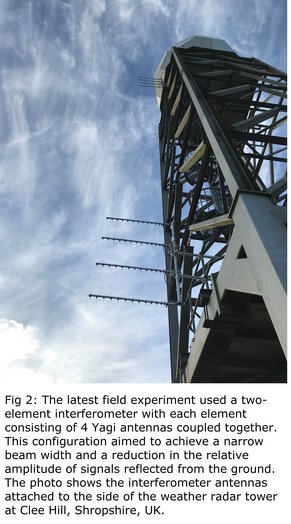
4 September 2023
Harry Otten Prize for Innovation in Meteorology 2023 awarded to Hamish Pritchard for his idea Lakes as snowfall sensors.
The Harry Otten Prize for Innovation in Meteorology has been awarded for the sixth time. During the Annual Meeting of the European Meteorological Society currently taking place in Bratislava, the jury announced that Hamish Pritchard from the British Antarctic Survey (U.K.) has won the first prize of 25,000 Euro. His idea, Lakes as snowfall sensors: Solving the precipitation problem in the mountain cryosphere, entails that lakes can be used as pressure-sensing surfaces to yield accurate observations of the water content of snowfall simply, cheaply, autonomously, and over large areas. With standard water-pressure sensors submerged on a lakebed, the mass of winter snow precipitation as it reaches the lake surface can be recorded, while avoiding biases that appear with other instruments that interact with snow as it falls or accumulates.
The winner of the prize was selected from three finalists. The other two finalists received 2,500 Euros for their ideas.
Philipp Gasch from the Karlsruhe Institute for Technology and his co-workers James Kasic and Zhien Wang (both at University of Colorado) presented their idea called “A novel airborne Doppler lidar system design for high-resolution wind measurements”. They propose a new airborne Doppler lidar onboard research aircraft, aiming to provide higher measurement accuracy and spatial resolution, in combination with a simplified and more robust system design. Its high resolution and accuracy allows for the retrieval of turbulence properties, such as vertical wind variance and turbulent kinetic energy. replica hublot big bang watches
A team composed of Irene Schicker, scientist at GeoSphere and Marianne Bugelmayer-Blaschek and Jasmin Lampert (both at the Austrian Institute of Technology) proposed to refine seasonal forecasts in their idea Weather impacts on renewables & agriculture: explainable AI for hyperresolution downscaling for S2S. While extended range and seasonal forecasts are rapidly developing, they lack the spatial resolution necessary for applications operating at a smaller scale. Since dynamic downscaling is computationally expensive, they aim to develop a novel, computationally inexpensive, transferable, and physics-aware post-processing methodology and establish trustworthiness within the scientific community and the public, and assess transferability to untrained regions.
The jury received 18 applications for the prize with lead authors from at least 14 different countries in Europe, Africa, Australia, and the U.S.A. The Harry Otten Prize is awarded every two years. More information is available at the website at www.harry-otten-prize.org.
Pam Emch, Chair of the Board of the Harry Otten Foundation, commented, “The Board was gratified to see the number of diverse and interesting ideas that were submitted. The idea put forward by Hamish Pritchard can help cost effectively address and improve the quantification of precipitation that falls as snow. An improvement in this measurement has applicability not only in meteorology, but also in water resources planning and management and could potentially be utilized for remote sensing instrumentation/observation calibration/validation.”
About Harry Otten and the Harry Otten Foundation
Harry Otten has been active in meteorology for more than 40 years, 25 years of which he served as founder and director of Meteo Consult (now integrated in DTN). In those 25 years the company grew from 5 starters to more than 270 people in more than 10 countries, making it the largest private weather company in Europe and one of the leading weather companies in the world. Harry sold his company between 2005 and 2011 and wanted to express his gratitude to the meteorological community by creating a fund that will be used to reward innovative ideas in meteorology.
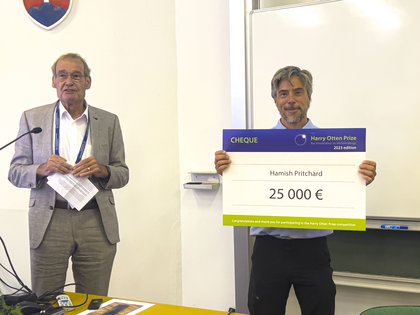
1 June 2023
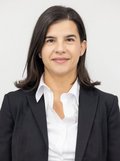
Welcome Samira Khodayar Pardo
We are delighted to announce that Samira Khodayar Pardo has joined the board mid 2023. Samira is the Head of the Department of Meteorology and Climate at the Mediterranean Centre for Environmental Studies (CEAM, Valencia, Spain) since 2021 and a Distinguished Researcher of Excellence in the CIDEGENT-GVA Program.
1 March 2023
Farewell María Carmen Llasat
Board Member María Carmen Llasat resigned from the Harry Otten Foundation Board of Directors on 1st March 2023. Maria Carmen joined the Board on 1st January 2022. María Carmen is from the University of Barcelona. We thank Maria Carmen for her efforts for the Harry Otten Foundation.
26 September 2022
Second Wind: Progress since September 2021
The 2021 Harry Otten Prize was awarded to Kate Saunders (Monash University, formerly Queensland University of Technology) and Kirien Whan (KNMI) to continue their research into crowd-sourced wind observations. Most weather warnings issued by KNMI are due to extreme wind gusts. Yet there are big observing gaps for wind gusts between official stations, as gusts are highly variable in space. The only feasible way to fill these gaps is with crowd-sourced observations. However, trust in crowd-sourced observation quality has been a barrier to date. The prize recipients intend to change this, and to help unlock the potential of these crowd-sourced gust observations for others. Their recent paper, led by master’s student Jieyu Chen, showed that high quality, crowd-sourced wind speed observations can be obtained after appropriate quality control and bias-adjustment procedures [Chen et al., 2021]. Figure 1 shows the improvement in data quality when comparing crowd-sourced WOW stations and official KNMI stations. This work shows the potential for crowdsourced wind speed observations and led to the development of the idea for the Harry Otten prize around wind gusts. Kate and Kiri are currently recruiting a PhD student to work on crowdsourced wind gusts. This project will be financially bolstered by the Harry Otten prize and will allow the PhD student to travel between Australia and the Netherlands. Contact Kate for more information.
Kate and Kiri have also collaborated with Gala Camacho Ferrari from DiagonalWorks to explore how Open Street Maps can be used to identify obstructions in the wind field based on the locations of buildings and other infrastructure. Gala created obstruction profiles for official KNMI and crowd-sourced stations in the Netherlands. These obstruction profiles show from which wind directions the stations have an unobstructed flow. The differences between official and crowd-sourced stations is stark. Following on from this work, Kate supervised a summer research student, Peter Tarbit, at QUT. Peter developed data-driven quality control methods to identify obstructions using the frequency of observed wind directions.
Research into the use of crowd-sourced observations also continues at KNMI. Kiri contributed to a discussion paper, led by collaborator Dr Irene Garcia-Marti, about the challenges a national meteorological service like KNMI faces in the use of third-party data, including crowd-sourced observations [Garcia-Marti et al., 2022]. Irene and Dr Jouke de Baar (KNMI) have supervised two masters students who explored multi-fidelity spatial interpolation approaches to combine high-quality KNMI data (‘first party data’) with lower quality data from trusted partners (e.g., Department of Waterways and Public Works, ‘second party data’) and crowd-sourced networks (‘third party data’) to a high-resolution grid. Danielle van Beekvelt (Utrecht University) developed Kriging methods so that they work well with noisy data and can differentiate between the systematic and random errors in first, second and third party data. She used a simulation study to show that for variables with high spatial variability, like wind gusts, the spatial interpolation is better when second and third party data are also included, compared to using only first party data. This also shows the potential added value for crowd-sourced data in operational applications. More recently, Kate has also secured funding from the QUT Centre for Data Science and Australian Centre of Excellence in Mathematical and Statistical Frontiers to install personal weather stations in schools. Students will start collecting the weather observations today that will be needed to understand the changing climate trends in their local community in the future. In particular, these personal weather stations will helping to fill observing gaps in more regional and remote areas in Australia. This work is ongoing and joint with researchers at QUT (Katie Buchhorn), at the Australian Bureau of Meteorology (Dr. Luke Cravigan) and at CSIRO (Dr. Carolyn Huston and Dr. Petra Kuhnert).
References
J. Chen, K. Saunders, and K. Whan. Quality control and bias adjustment of crowdsourced wind speed observations. Quarterly Journal of the Royal Meteorological Society, 147 (740):3647–3664, 2021.
I. Garcia-Marti, A. Overeem, J. W. Noteboom, L. de Vos, M. de Haij, and K. Whan. From proof-of-concept to proof-of-value: approaching third-party data to operational workflows of national meteorological services. International Journal of Climatology, 2022.
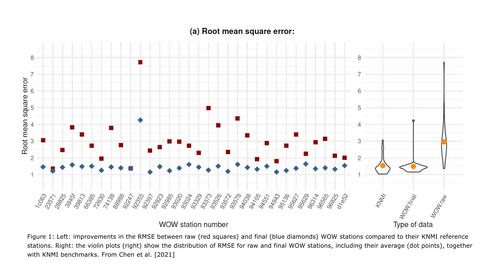
7 September 2022
Dinner in Bonn.
On the occasion of the EMS 2022 conference in Bonn, Harry and Els, the HOP winner and finalists of the 2021 round, and current and former HOP board members met to enjoy a dinner next to the river Rhine. Due to the pandemic the prize in 2021 was announced and handed over in an online meeting, without further onsite celebrations. So it was time catch up and meet each other. The finalists reported on their progress on the further development of the idea they submitted to the Harry Otten Prize 2021. Moreover, this occasion was also the official farewell of Leo Kroon, who served for six years on the board, first as regular board member and later on as president for 3 years. The board thanks Leo for his efforts!
This is was also the moment to open the 2023 call for applications for the Harry Otten Prize.
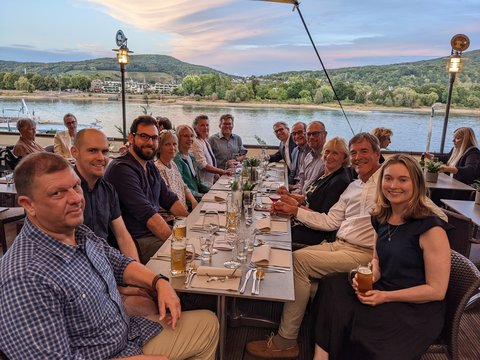
1 January 2022
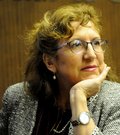
Welcome María Carmen Llasat
We are delighted to announce that María Carmen Llasat has joined the board. María Carmen is full Professor of Atmospheric Physics at the University of Barcelona, and Coordinator of the Meteorology Section of the Department of Applied Physics, within which she has been leading the GAMA Group since 1995. Read more information about Maria Carmen is available in the Information part of this website.
7 September 2021
Harry Otten Prize for Innovation in Meteorology awarded to Dutch/Australian Researchers---Kirien Whan and Kate Saunders receive 25,000 Euro for their idea of using citizen weather reports for earlier warnings on severe storms.
The Harry Otten Prize for Innovation in Meteorology has been awarded for the fifth time. During the Annual Meeting of the European Meteorological Society currently taking place virtually, the jury announced that Kirien Whan, from the Royal Netherlands Meteorological Institute (KNMI) and Kate Saunders from the Queensland University of Technology (QUT) have won the first prize of 25,000 Euro. Their idea, Second Wind: Extending the official wind gust record with citizen science observations, is to use citizen observations of wind gusts, apply new methods of quality control to them and integrate the data into observations taken from standard measurement networks. Wind gusts are causing severe damages. Every seven out of eight weather warnings issued by KNMI in 2018 involved extreme wind gusts. Often, high wind gusts occur very locally, in between the traditional measurement network. A more detailed picture of the wind gusts can help to alert the public further in advance and more accurately.
The winners of the prize were selected from three finalists. The other two finalists received 2,500 Euros for their ideas.
Moritz Mauz from the University of Tübingen in Germany presented his innovative idea called A high-frequency chilled-mirror hygrometer for turbulent stationary and airborne dew-point measurements. He proposed a small, lightweight, accurate and fast instrument that can measure turbulent moisture fluxes. The instrument can be operated on the ground or even mounted on an unmanned aircraft. This can help to better understand moisture fluxes in the boundary layer and eventually improve weather forecasts.
Joshua Soderholm from the Australian Bureau of Meteorology called his idea Observing the Impossible – in situ observations of hail trajectories using the HailSonde. His goal is to release probes into thunderstorms to better understand the path hail stones take within the cloud until they hit the ground. The benefits would be more accurate predictions of hail events reducing false alarms. Retrospectively, more precise hail swaths can help insurances to better deal with hail events, also in urban areas.
The jury received applications for the prize from different European countries, Australia, and the USA. Harry Otten was pleased at the announcement of the 2021 winner of the Prize: “Innovation has been an important driver for the weather industry and still is. There are many public services among the customers of my venture Wettermanufaktur which potentially can benefit a lot from the implementation of the winning idea to use wind gusts observations from citizen weather stations.”
31 March 2021
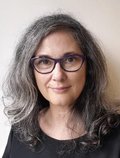
Farewell Aurora Bell
Board Member Aurora Bell resigned from the Harry Otten Foundation Board of Directors on 31 March 2021. Aurora joined the Board on 15 July 2020 and started making an immediate impact. Aurora is from the Bureau of Meteorology in Melbourne Australia, and therefore she has strong connections with the meteorological community in Australia. The Board has long wanted to improve its profile in the Southern Hemisphere, and Aurora proved to be an extremely energetic advocate and helped spread the word about the opportunity of the Harry Otten Prize both in Australia and in other parts of the world. In addition, she worked to ensure that the Board continue to consider diversity, equity, and inclusion in its activities. We will miss her.
1 January 2021

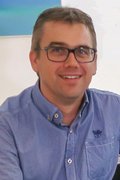
Goodbye Leo Kroon, welcome Gert-Jan Steeneveld
January 1 marks the end of the second term of Leo Kroon as board member of the Harry Otten Foundation. In 2014 Leo became a Board member after the untimely death of chairman Hans Reiff. Leo served the Board from 2015 to 2020. During his second term he was chairman of the Board. From 2021 onwards Pamela Emch will chair the Board. She thereby starts her second three-year term on the Board. Leo's successor as board member is Gert-Jan Steeneveld from Wageningen University, the Netherlands. Gert-Jan was a finalist in the 2017 Harry Otten Prize. He presently acts as session convenor at the EMS annual meeting. We wish Gert-Jan lots of success during his time on the Board.
15 October 2020
ADS-B Interferometry – Progress since September 2019
The Harry Otten Prize money (see News article 10 September 2019) was used to fund a joint Met Office/University PhD position based at the University of Exeter. The overall aim of the PhD is to further development of the technique and assess the potential benefits of any future operational implementation. After some inevitable delays the post is now in the process of being advertised. In the meantime, a bid for further funding was made to the UK Natural Sciences Research Council to support the establishment of a prototype interferometer network, along with data analysis, data modelling and simulation work. The bid was ultimately unsuccessful, but most useful input and feedback was obtained along the way. These setbacks have slowed, but not halted, development work, and several groups of undergraduate students at Exeter University have been working on aspects of the technique as course project-work. Discussions have also taken place with the team at the Met Office working on the assimilation of data from the occultation of signals from GPS satellites – an established technique that is somewhat analogous to ADS-B interferometry and shows positive benefits on weather forecast accuracy. The recent work supports previous conclusions that the technique is probably technically feasible, but that inversion of the data to yield refractivity fields, or direct assimilation of the observational data into Numerical Weather Prediction Models is likely to be challenging. Nevertheless, the additional external reviews of the idea have been generally positive, and the Met Office has decided to press ahead with the installation of a prototype interferometer on a radar tower (see picture below). It is hoped that this installation will be in place so that data will be available for the PhD student to work with right from the start of their course in 2021.
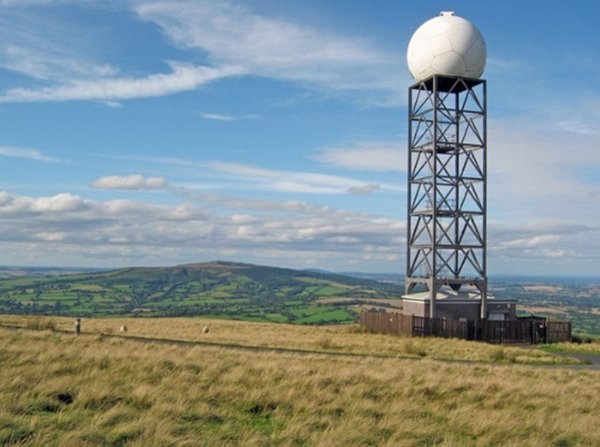
The radar tower at Clee Hill in Shropshire, England. It is planned to install the first prototype interferometer on this tower over the winter 20/21.
15 September 2020
Start of the next round for the Harry Otten Prize
September 15 2020 saw the opening of the next round for submissions for the Harry Otten Prize. Applicants from all over the world are invited to submit their idea for this prize of 25,000 Euro. Submission is simple: in the first round only a short description of the idea, using the Application form, needs to be submitted. This first round ends on 10 March 2021. After that a second round of selected submissions starts, see the Timeline on this website. An overview of former prize winners and their idea can be found here. The prize will be awarded during the EMS Annual Meeting on 6-10 September 2021 in Barcelona, Spain.
15 July 2020
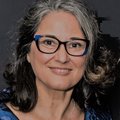
Welcome Aurora Bell
We are happy to announce that we have found a new board member to fill the place vacated by Tanja Cegnar. Aurora Bell from the Bureau of Meteorology, Melbourne Australia, has enthousiastically agreed to join the board. After a selection procedure with several other candidates she was unanimously chosen to be the best one to fill Tanja's place. Read more about Aurora in the Information part of this website.
1 June 2020

Closer ties with the EMS
The European Meteorological Society (EMS) and the Harry Otten Foundation have formalized their close cooperation. A Memorandum of Understanding, signed by both Robert Riddaway (President of the EMS) and Leo Kroon (Chairman of the Harry Otten Foundation), specifies the arrangements for the Harry Otten Prize that is awarded biennially at the EMS Annual Meeting. The agreement is based on their shared vision of advancing meteorology for the benefit of society within Europe and elsewhere and states the responsibilities of both parties as well as financial and legal arrangements. We are very happy with this document and hope it will prove a solid base for a longlasting cooperation.
1 May 2020
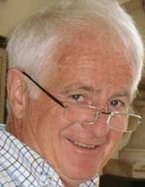
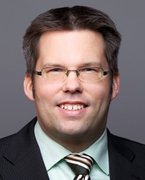
Farewell David, welcome back Dennis
Board Member and Treasurer David Burridge resigned from the Harry Otten Foundation Board of Directors on 1 May 2020. David joined the Board on January 1, 2017 and became the Treasurer on January 1, 2018 when he took over this position from Dennis Schulze. David has been a valuable member of the Board especially during the EMS 2017 Annual Meeting where his insight into the selection of the finalists and the winner was important and worthwhile. David could not attend the EMS 2019 Annual Meeting but supported the Board in the selection process by telephone from his home in the UK. Taking over the Treasury from Dennis proved to be a difficult task but one that he managed excellently.
Dennis rejoined the Harry Otten Foundation Board of Directors on 1 January 2020. Dennis has been a Board member from 2011-2017 and agreed to become Treasurer again for a new term. We are very happy to welcome Dennis back since he will bring invaluable information and experience into the Board.
1 January 2020
Farewell Tanja
Board Member Tanja Cegnar resigned from the Harry Otten Foundation Board of Directors on 31 December 2019. Tanja was a valuable link between the Board and the public broadcasting community. She was always full of enthusiasm and stimulated the Board with new ideas. As a jury member for the Harry Otten Prize, she often provided valuable and unique perspectives on the proposals being considered for the prize. The Board wishes her continued success in her career at the Slovenian Meteorological Office where she works. The Board is now searching for a new member to fill Tanja’s place. It will not be easy to find someone with her experience, dedication and enthusiasm.
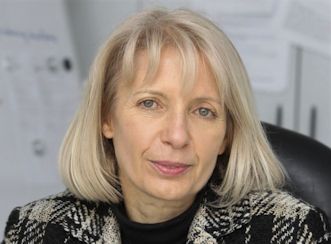
21 September 2019
2015 Finalist Tim Hewson (UK) about implementation of his idea
Since reaching the 2015 Harry Otten prize final, the “Point Rainfall” idea of Tim Hewson and Florian Pappenberger has gone from strength to strength. The idea involves applying a new and innovative post-processing technique, to ensemble-based probabilistic weather forecasts for the world (that denote area-averages, for regions covering about 400 km2), to accurately predict rainfall at points, i.e. as measured by rain gauges.
ECMWF initially recruited a graduate trainee to work on this, from January 2016, and following considerable R&D work, examining the predictive value of different input variables, and a major effort to create code that runs in real-time on a supercomputer, the first operational point rainfall forecasts became available to ECMWF customers in April 2019. Initial feedback has been very positive, which mirrors the impressive verification scores. These global scores show that, relative to raw model output, the post-processed forecasts are not only much more reliable, in a statistical sense, but are also much better at discriminating occasions when extreme point totals are possible. Useful skill in this respect extends as much as 6 or 7 days into the future; for the raw model output it is barely 1 day. Thus, we can predict when there is a risk of flash floods much more accurately than hitherto.
To support expansion of the work, we have been involved in consortia bids for EU funding. These have delivered 650,000 Euros for ECMWF, and four scientists are now directly involved. Meanwhile the number of project spin-offs continues to grow. For example, a related open-source GUI tool for calibration, to benefit the wider meteorological community, has been developed. And we will also create a unique, daily, global point rainfall dataset, extending back to 1950, based on the ERA5 re-analysis. For more information on point rainfall forecasts, and related links, see here.
An operational point rainfall forecast from ECMWF for southeast Spain (above, right) compared with an equivalent 100th percentile field from the raw ECMWF ensemble (above, left) with verifying observations for the same 12-hour period (bottom). The “worst case scenario” shown on the right (strictly with a 1 in 100 chance of exceedance) matches better the most extreme totals measured, which lead to severe flash floods. The peak 12-hour total reported to ECMWF during this severe weather episode (which lasted 2-3 days, and which had widespread media coverage) was 314mm in La Manga (dark blue spot). (Click figure to enlarge)
10 September 2019
Harry Otten Prize for Innovation in Meteorology awarded in Copenhagen
The Harry Otten Prize for Innovation in Meteorology has been awarded for the fourth time. During the Annual Meeting of the European Meteorological Society currently taking place in Copenhagen, Denmark, the jury announced that Malcolm Kitchen from the UK Met Office and Chris Brunt from the University of Exeter, have won the first prize of 25’000 Euro. Their idea, A New Method of Measuring Atmospheric Refractivity, is to obtain information of the atmosphere by measuring the bending of radio signals broadcast by commercial aircraft. The method generates important information on the humidity all the way from the airplane to the measuring instrument. Knowing the moisture distribution in the atmosphere is very important for computer calculations of the weather. Shower prediction, for instance, could be improved with their method. They demonstrated the viability of the idea using a preliminary setup in southwest England.
The winners of the prize were selected from three finalists. The other two finalists received 2’500 Euros for their ideas.
Yann Dufournet, Igor Stepanov, and Geanny Amos dos Santos from SkyEcho in The Netherlands presented their innovative idea called enLIGHT – A new way to communicate high definition weather data about the incoming weather hazards to citizens. They propose to use high resolution weather radar and nowcasting to warn urban residents about hazardous weather on very short timescales. They demonstrated their idea for the city of Rotterdam.
Paul Petersik from Germany discussed his idea called VineForecast – A tool to generate individual predictions of vine diseases and phenology. The goal is to predict the risk of outbreaks of mildew in vineyards using high resolution model output, local observations, and machine learning algorithms. This would provide vineyard owners with timely warnings of possible disease outbreaks thus preventing overuse of fungicides.
The jury received applications for the prize from different European countries, Russia, and the USA. Leo Kroon, Chairman of the Board of the Harry Otten Foundation, commented, “The idea put forward by Malcolm Kitchen and Chris Brunt is highly innovative. It enables the observation of humidity in the lowest layers of the atmosphere, thereby potentially improving weather forecasts, especially for regional applications.”

At the EMS 2019 in Copenhagen Harry Otten presents the prize to Chris Brunt (centre) and Malcolm Kitchen (right). Photo: Thorsten Iversen.
15 August 2019
2017 Harry Otten Prize winner Lee Chapman on the practical implication of his idea
Since winning the Harry Otten Prize in 2017, our high-resolution sensing ideas have started to find their way into everyday use across northern Europe. Using an operating division at the University of Birmingham, we have sold wintersense (road surface temperature) sensor networks to local authorities responsible for gritting the roads across the length and breadth of the UK. Some have even found themselves installed further afield with installations in Belgium, the Netherlands, Sweden and Germany. The low-cost nature of the approach has also meant we have reached out to organisations who were unable to afford standard road observation equipment, so we now have sensors located on private car parks (e.g. supermarkets and hospitals) to assist in their winter maintenance efforts. Indeed, wintersense has proved so successful, in 2019, we licensed the approach to international instrumentation and data management specialists Campbell Scientific Ltd who have grand plans to market the product across the globe. Finally, the autumnsense idea, which is used on railways to mitigate against leaves on the line issues, also looks set to take-off this year with our operating division having sold the first autumnsense networks. Watch this space as these are due to hit the tracks in autumn 2019!
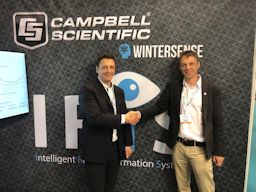
Lee Chapman (right) at a trade show with Campbell Scientific when re-launched the product under their branding.
1 January 2018
Changes in the Board of the Harry Otten Foundation
Per 1 January 2018 three members retired from the Board of the Harry Otten Foundation: Richard Anthes, Dominique Marbouty and Dennis Schulze. The Board has a strict rotation schedule and their membership could not be extended. So new Board members had to be selected. On 1 January 2017 David Burridge joined the Board (see News article of 7 November 2016) and on 1 January 2018 Pamela Emch (top photo) and Olivier Boucher (bottom photo) joined the Board as well. Leo Kroon succeeded Richard Anthes as Chairman and David Burridge will be the new Treasurer. The three members leaving the Board were three of the "founding fathers": they were on the Board since the very beginning of the Foundation. They will be sorely missed because they were inspiring and experienced members and a great deal of knowledge, gathered during their six years' membership, has now left the Board.
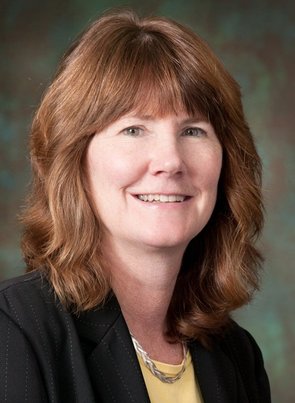
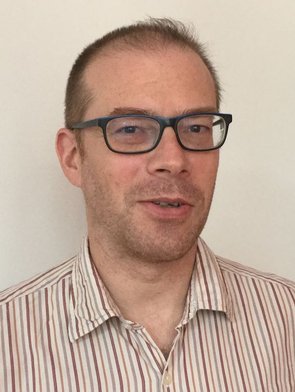
5 September 2017
Harry Otten Prize for Innovation in Meteorology awarded in Dublin
Lee Chapman, Professor at the School of Geography, Earth and Environmental Sciences, University of Birmingham, UK receives 25’000 Euro for his idea of using low-cost sensors and the Internet of Things to advance weather forecasts.
The Harry Otten Prize for Innovation in Meteorology has been awarded for the third time. During the Annual Meeting of the European Meteorological Society in Dublin, Ireland, the jury announced that Lee Chapman has won the first prize of 25’000 Euro. His idea, High-Resolution Monitoring of Weather Impacts on Infrastructure Networks, is to use the “internet of things” and low-cost sensors to monitor the weather on a very dense network to improve short-range forecasting. Chapman provided one example where low-cost sensors connected to the internet could provide real-time information on the condition of roadways in winter to inform efficient applications of salt on road surfaces and at the same time avoiding wasteful oversalting of roads that are above freezing. In a second example, he showed how other sensors could detect leaf wetness on railways, which often cause train braking problems in autumn.The winner of the prize was selected from three finalists. The other two finalists received 2’500 Euros for their ideas.
Tom de Ruijter, a computer scientist at Big Data Republic in the Netherlands, presented an innovative idea Making use of errors in consumer weather data to derive advanced weather parameters. De Ruijter proposed to use errors in ground surface measurements to derive information about meteorological conditions such as nighttime cloud cover and snow vs. rain conditions.
Gert-Jan Steeneveld and Sytse Koopmans, Wageningen University in the Netherlands discussed their idea CrowDat@ssimilation: Assimilation of crowdsourced meteorological data in NWP models to improve small-scale weather forecasts. The basis of this idea is to use crowd-sourced data in high-resolution numerical weather forecast models to improve short-range forecasts.
Overall the jury received 12 applications for the prize from different European countries and the USA. The Harry Otten Prize is awarded every two years.
Richard Anthes, Chairman of the Board of the Harry Otten Foundation, commented: “Lee Chapman’s idea of using many low-cost sensors, all connected to the internet to deliver immediate observations of weather and weather impacts such as road conditions, has the potential to substantially increase our ability to know when and where hazardous conditions exist and increase users’ confidence in using these forecasts in critical weather situations.”
Harry Otten was pleased at the announcement of the 2017 winner of the Prize: “After a number of years of retirement, I have started Wettermanufaktur as a new weather business in Berlin. The first customers for the company are the authorities responsible for sanding and salting the roads. The idea of Lee Chapman to use low-cost sensors to measure the road conditions could be very valuable in providing better services to our customers.”
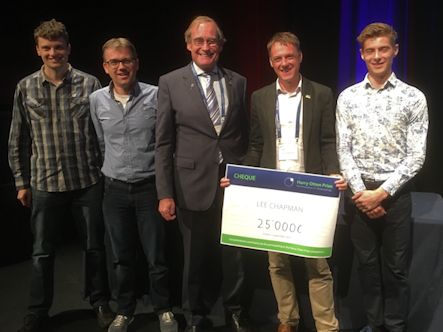
Harry Otten and the finalists at the EMS 2017 in Dublin. From left to right: Sytse Koopmans, Gert-Jan Steeneveld, Harry Otten, Lee Chapman and Tom de Ruijter.
29 July 2017
Finalists for Harry Otten Prize 2017 to give presentations at EMS meeting in Dublin
The Board of the Harry Otten Foundation has selected three finalists for the Harry Otten Prize for 2017. They are Professor Lee Chapman (School of Geography, Earth and Environmental Sciences, University of Birmingham, UK), Tom de Ruijter (Meteogroup, Wageningen, Netherlands), and Gert-Jan Steeneveld and Sytse Koopmans (Wageningen University).
The three finalists will present talks about their ideas at the 2017 meeting of the European Meteorological Society (EMS), to be held 4-8 September 2017 in Dublin, Ireland. (https://www.ems2017.eu/ ). The talks will be in PSE3 (Plenary Sessions and Special Events-3) from 14:00 to 15:30 on Monday September 4 in the Gallery.
After the presentations the Board will meet to select the first-place winner of the prize and possible second and third prize winners. The winner(s) will be announced and awarded their prizes during the EMS Awards session (PSE4) on Tuesday, 5 September from 18:15 to 19:30 in the Theatre.
The titles and abstracts for the three talks are presented below:
High-Resolution Monitoring of Weather Impacts on Infrastructure Networks
Lee Chapman
The impacts of weather and climate on infrastructure are numerous. From a business perspective, the largest opportunities exist in the prediction of smaller impacts where preventative action can be taken by operators/end-users to reduce the severity of the weather event, for example, winter road maintenance, railway buckling, leaves-on-the-line, wind impacts on power cabling etc. Advances in modelling mean that these impacts can now be predicted at a high resolution (e.g. route based forecasting for winter road maintenance) so that mitigation activities can be actioned at vulnerable sections of the infrastructure network.
However, whilst high-resolution models have been in operational use for the last decade, in an environment of increasing litigation, practitioners remain nervous about making decisions solely based on model output. This means that the verification of forecasts is now needed on a scale previously not required, and it is only with this step that end-users will be responsive to using methods which will save money without compromising safety on the network (e.g. selective salting for winter road maintenance where only the coldest sections of road are treated or localised rail speed restrictions in hot weather as opposed to the blanket restrictions currently used).
Hence, there is a clear and pressing need for high-resolution infrastructure monitoring, but existing techniques are simply not capable of producing this solution. Point measurements using traditional sensors are too expensive to install in the numbers required and therefore lack the spatial resolution. Mobile measurements provide an alternative, but these lack the temporal resolution to provide the full picture. Therefore, it is proposed that the emerging Internet of Things could be transformative in this sector, providing the enabling technology to saturate our infrastructure networks with low-cost sensors. In doing so, it will not only provide unprecedented monitoring of weather impacts on infrastructure networks, but would also open the door to a new generation of nowcasting products harnessing the benefits of high resolution observations. These two developments combined will enabling the targeting of costly mitigation efforts more effectively than ever before.
Making use of errors in consumer weather data to derive advanced weather parameters
Tom de Ruijter
Consumer weather stations are widely present in the current age of technology, with currently over 200 thousand online stations online world-wide. These stations and their data do not come without problems as they are not maintained and checked by professional meteorologists. While error filtering is possible, we could also use the information within these structural errors.
This work highlights two out of many possible uses for such structural measurement errors. First, it is possible to derive night-time effective cloud cover maps based on cooling behavior. Second, it is possible to derive the wet-solid precipitation type distinction based on errors in community precipitation measurements.
The night-time cloud cover prediction is mainly based on the effect that most consumer stations are not placed in ventilated Stevenson screens and are more sensitive to changes in long wave radiation, caused by for example clear spells. We derive a machine learning model to nowcast effective cloud cover.
The wet-solid precipitation type is based on the 'shortcoming' that consumer precipitation measurement cups freeze over and fill up when exposed to solid precipitation. When combined with radar or satellite images, the precipitation type can accurately be deduced.
In the presentation, we provide a detailed explanation as well as several use cases and initial verification results.
CrowDat@ssimilation: Assimilation of crowdsourced meteorological data in NWP models to improve small-scale weather forecasts.
Gert-Jan Steeneveld and Sytse Koopmans
Crowdsourcing in meteorology has become more and more a valuable approach. Hobby meteorologists put forward their collected data on websites as netatmo.com, weathersignal.com, wunderground.com. Moreover air temperatures can be estimated from smartphone battery temperatures. This development helps to understand the weather in data-scarce regions. So far, crowdsourced data has mainly been used for academic research by evaluating them against routine observations, and for model validation. However, here we propose to develop the CrowDat@ssimilation tool to evaluate the value of crowdsourced observations in numerical weather prediction via data-assimilation into initial fields of the NWP model WRF. The highest relevance is expected in small-scale processes, and therefore the CrowDat@ssimilation tool will explore three weather phenomena with strong horizontal gradients: 1) the urban heat island effect, 2) a squall line, and 3) a sea breeze.
13 November 2016
Who decides which innovative idea will be awarded 25 Thousand Euros?
Do you have a spirit of invention? Do you have fresh, innovative ideas how to improve meteorological services? If yes, you should apply for the Harry Otten Prize! The call for applications is open until 10 March 2017. We expect a tough competition between many excellent innovative ideas, and we thought you might be interested in who will decide the winner. There is a formal selection procedure in place that will be strictly observed in order to ensure maximum transparency and traceability of the selection process.
A selection committee is composed of Otten Foundation's board members, all who all have an excellent reputation in meteorology. The selection process is steered by the chairman of the Foundation, Richard Anthes, who is currently President Emeritus of the University Cooperation for Atmospheric Research in Boulder, Colorado. During his long scientific career, he has held a number of scientific leadership positions. His career includes experience at NOAA, Penn State University and NCAR (National Center for Atmospheric Research). He has won several prestigious awards, including the AMS Jule Charney Award and the Chinese Friendship Award, the highest award China makes to foreigners. Rick has also been awarded Honorary Membership of the AMS. His experience has provided him with wisdom and knowledge necessary to chair the selection committee.
Of course, he is not alone in this endeavour; other experienced board members assist him. First to mention is the vice chairman of the foundation, Dennis Schulze, who has a leadership position in the private sector at MeteoGroup as Chief Operating Officer. MeteoGroup is a highly successful meteorological services company founded by Harry Otten in 1986. Dennis is also responsible for research and development at MeteoGroup. The private sector is constantly constrained to compete and improve the services; on the free market only innovation and excellence of services ensures a sustainable future. Dennis brings his experience in this valuable culture to our Board.
Another well-known member of the Board and selection committee is Dominique Marbouty. Although during his long professional career he has held several important positions. Most meteorologists know him as former Director-General of the European Centre for Medium-Range Weather Forecasts (ECMWF) and deputy director general of Météo-France, the French national weather service. He is currently active in the audit body of the French ministry of Environment and was a recent President of the European Meteorological Society.
In 2014 Leo Kroon from the Netherlands joined the board and thus also the selection committee. Leo is Lecturer in Meteorology at Wageningen University. He has been active in the Dutch Meteorological Society and was Chief Editor of their journal Meteorologica. Besides scientific knowledge he is adding to the board a valuable perspective from the education sphere.
The communication aspects of proposals are taken care of by Tanja Cegnar, char of the EMS Media and communication team n member of the WMO CCI management group responsible for capacity building. Tanja works at the Slovenian Environment Agency and is a weather broadcaster at the national television in Slovenia. She was recently awarded the first EMS Outstanding Contribution Award at the EMS annual meeting in 2015 in Sofia, Bulgaria. She was honored "for her relentless pursuit of the Media and Communication activities of he Society".
The final member of the selection committee is David Burridge, former Director-General of the ECMWF and the newest member of the Harry Otten Foundation Board. David will officially join the Board on 1 January 2017. Please see the previous News article for more information on David's background and achievements.
Thus, the diverse selection committee from six different countries is fully qualified to make informed decisions through the decision process and to finally select the best innovative idea which will be awarded the 25 thousand Euro prize.
After submission of all applications by 10 March 2017, each member will carefully evaluate all the proposals individually. The main selection criteria are compliance with solid science and innovation, taking into account that proposals already on the way to implementation are not eligible. Also, proposals that are already being implemented will not qualify for the second round. After collection of all the individual votes, a teleconference will be organized and each member will present and justify his or her votes for each proposal. If a doubt or a major difference of opinion arises during the discussion, the selection committee will try to understand why and elaborate on that issue until the members will reach the consensus about the proposals, because only up to 8 proposals will qualify for the second round.
Those who qualify for the second round will be asked to develop further their proposal and answer a list of questions from the selection committee. Based on the extended proposals submitted by 29 may 2017, a second round of evaluation will take place. Again, each member of the selection committee will carefully evaluate the new information and will prepare a list of scores, which will be discussed during a second teleconference. The selection committee will have a challenging task to select 3 finalists with the best potential to meet the Prize criteria for the winner. The three finalists will be invited to publicly present their proposals during the EMS conference, in September 2017 in Dublin, Ireland, at the European Meteorological Society conference. They will answer additional questions from the selection committee members and from the audience. Based upon the overall proposal and presentations, the selection committee will make a final decision about the winner.
Now you know more about the jury and the selection process, you only need to apply for the award. We are looking forward to receiving your submissions!
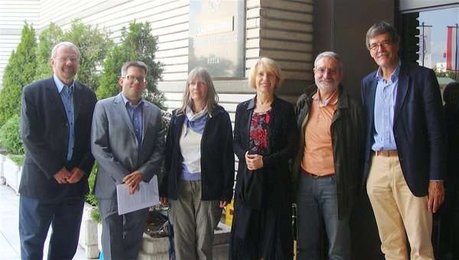
Members of the Harry Otten Foundation at the EMS meeting in Sofia, September 2015. From left to right: Rick Anthes, Dennis Schulze, Andrea Oestreich (Executive Secretary), Tanja Cegnar, Dominique Marbouty and Leo Kroon.
7 November 2016
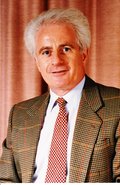
David Burridge named new Harry Otten Foundation Board Member
Dr. David M. Burridge, former Director General of the European Centre for Medium-Range Weather Forecasts, was recently named a member of the Harry Otten Foundation Board of Directors. Dr. Burridge has a long record of leadership and achievement across a wide spectrum of work in operational weather forecasting.
The Directors on the Harry Otten Foundation Board serve three-year terms, which are eligible for renewal one time. Dr. Burridge’s first term begins 1 January 2017.
After his university education and a one-year postdoctoral appointment at the Florida State University, he was employed by the UK Met Office (1970 to 1975) where he worked on the development and assessment of operational forecasting models.
In 1975 he joined the newly established European Centre for Medium-Range Weather Forecasts (ECMWF). He spent most of his professional career at ECMWF (1975 to 2004) and in January 1991 he was appointed to the position of Director and Chief Executive of ECMWF. During his time at ECMWF, he was the Director for more than 13 years, he led the research program for eight years and prior to this he designed and built the first ECMWF global forecasting model.
In 2005 he was employed by the “World Meteorological Organisation (WMO)” (Geneva) to establish, direct and manage the WMO International Programme Office for THORPEX – the main aims of THORPEX were the reduction and mitigation of the effects of natural disasters and the adverse effects of weather, and the realization of societal, economic and environmental benefits of improved weather forecasts. Prior, to retiring from THORPEX in late 2011, David established the WWRP Polar project and the Sub-seasonal to Seasonal Prediction project.
He has chaired the UK Universities' Global Atmospheric Modelling Programme (UGAMP) Scientific Steering Group, advised both the European Space Agency (ESA) and NASA on satellite instruments to observe the earth, advised the European Commission and CERN on high speed computing and chaired international WMO working groups on weather forecasting research.
He has been a fellow of the Royal Meteorological Society (RMS) since 1970 and served on its Council between 1975 and 1978 and was a Vice-President for 1990 to 1992 and 1999 to 2000. He was elected President of the RMS for 2000 to 2002. During his Presidency, he established the societies’ first real long-term strategy, one element of which was the creation of a regular programme of national conferences on the environmental sciences.
David served on the governing Council of the European Meteorological Society (EMS) and was the President of the EMS for the three-year period 2005 to 2008 and during this period revised the society’s organizational structure and implemented a new strategy.
Dr. Burridge has many honors and awards, including Commander of the British Empire (CBE) for services to meteorology, Honorary Doctorate of Science from the University of Reading, Honorary Fellowship from the University of Swansea, Silver Medal from the European Meteorological Society, and Honorary fellow of the Royal Meteorological Society.
Currently, David is a full member the UK Met Office Board.
8 September 2015
Harry Otten Prize for Innovation in Meteorology awarded for the second time - idea to use aircraft condensation trails to make measurements of atmospheric wind and humidity wins 25 thousand Euro
The Harry Otten Prize for Innovation in Meteorology has been awarded for the second time. During the Annual Meeting of the European Meteorological Society currently taking place in Sofia, Bulgaria, the Board of the Harry Otten Foundation announced that Olivier Boucher has won the prize of 25 thousand Euro for his idea “Probing the Upper Atmosphere by watching aircraft.”
The idea is to use a simple all-sky camera to observe condensation trails from aircraft, i.e. those long clouds that sometimes form behind flying planes. This detection can be greatly facilitated if you know where to look for them, using an aircraft message receiver that gives the location of all aircraft flying above the receiver.
The camera measures the width and length of the contrails and their changes over time. These images provide valuable information about humidity and wind that can be used to improve numerical weather model forecasts. Such information, which will be taken mostly in clear air, will complement information from satellite observations of clouds and their motion.
This proposal was evaluated as scientifically sound, technically feasible and highly innovative. Its potential to improve the quality of global weather forecasts would benefit all users of weather forecasts.
Olivier is a research director of the French Centre Nationale de la Recherche Scientifique since 2011, after spending 6 years with the Met Office Hadley Centre in the United Kingdom.
He has also been working for many years with the IPCC.
The winner of the prize has been selected out of three finalists. The other two participants in the final round received 2500 Euro for the following ideas:
Rogiros Tapakis and Alexandros Charalambides (Cyprus University of Technology) for their idea to use a solar measurements from a dense network of photovoltaic cells to help electrical power generation companies manage the balance of sources of power.
Tim Hewson and Florian Pappenberger (Eureopean Centre for Medium Range Weather Forecasting) for their idea to predict small scale flash floods using forecast from much larger scale global weather prediction models.
Overall the jury received 13 applications for the prize from different European countries, Israel, and Cuba. The Harry Otten Prize is awarded every two years. More information is available at the website at www.harry-otten-prize.org.
According to Richard Anthes, Chairman of the Board of the Harry Otten Foundation: The finalists for this round of the Harry Otten Prize contributed outstanding examples of innovative ideas that have the potential for applications to benefit society.”
Harry Otten, founder of the Harry Otten Foundation, said “I am delighted that the prize has been awarded for such an innovative proposal. Using photographs from the condensation trails from aircraft can bring in new and valuable information to improve global weather forecasts, which will benefit all societies in the world.”
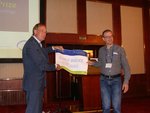 |
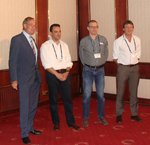 |
10 June 2015
Finalists for the 2015 prize round selected by the jury
The jury has selected the finalists for the 2015 prize round. They will present their idea at the Annual Meeting of the European Meteorological Society (EMS) on 7th of September 2015 in Sofia. There will be a special session for these presentations at 14.00 in room Kyoto. The finalists are:
- R Tapakis and A G Charalambides: Methodology for predicting solar irradiance (Abstract)
- O Boucher: Probing the upper troposphere by watching aircraft (Abstract)
- T Hewson and F Pappenberger: Predicting Flash Floods using Current‐Generation Global Models (Abstract)
After the presentations the jury will make a decision about the prize winner. The prize will be handed over during the awards ceremony of the EMS Meeting on 8 September 2015.
29 June 2014
Interview with Karolina Stanislawska (winner of the Harry Otten Prize in 2013) by Tanja Cegnar (member of the Harry Otten Foundation Board)
Hello, Karolina, and thank you for agreeing to be interviewed for the Harry Otten Prize web site. To start off, could you tell us a little bit about yourself?
Hello Tanja. I am 27 years old and I come from Poland. My professional background is computer science, but I was also studying geosciences for some years in parallel. This was my idea for a career path, to have a good technical background and some insight into another domain that interested me and which could be a good field for potential applications. And luckily I manage to do it that way so far. Since 2009 I have been working at various R&D projects, such as estimation of real-time people movements in the city of Amsterdam based on mobile phone activity, or development of software to enhance point weather forecasts in complex terrain in Iceland. I was also employed as a researcher in the Finnish Meteorological Institute, where one of my most interesting experiences was working on a code for automated measurements at a remote station in Finnish Lapland. Currently I am based in Wroclaw, Poland and I do a remote work for the aforementioned employers in Iceland (where I continue my previous work) and in Finland where I do my own project of implementing bio-inspired computing (genetic programming, which was my specialty within computer science) to modeling some processes in the Arctic. After I won the prize, I got also involved in a short-term project at MeteoGroup to estimate social media answer to certain weather events.
When and why did you develop the idea of using social media in meteorology?
The idea appeared several months before I heard about the Harry Otten Prize. In fact it was a combination of all pieces of my professional experience. I was a programmer working at a meteorological institute in Helsinki, but only several months earlier I took part in a research on the role of social media in detecting extraordinary events in the Netherlands. All those areas were very appealing, however they were completely unrelated. As I was at that time thinking a lot about my career path, combining everything that was interesting to me was the “ideal case”. Unfortunately (or fortunately, for the further course of events) I didn't find anyone who was doing this type of research.
What made you decide to apply for the Harry Otten Prize?
I found the announcement about the prize on my work email. I had not taken part in any competition for many years and around that time some of my friends have been successful in some of their domains. That made me think I should maybe also try, to see how such a competition goes. After seeing the “example ideas” on HOP website, I wasn't really convinced that my idea is something that could go through the first round, but I tried not to think about it and just write down my thoughts.
What does this prize mean for you?
Choosing a “unique” career such as I chose sometimes puts you into doubt, making you feel that you don't really fit to any ”standard” workplace. You feel for yourself that what you do is good, but as there are no people who go this way, it is hard to find a job that would really satisfy you. Being granted the prize made me understand that the path I took makes sense and convinced me again that I shouldn't be abandoning it. After all, I prefer the adventure rather than sitting in the same office for 20 years!
What tips would you give other potential applicants thinking of entering the competition?
I would like to especially encourage non-meteorologists who see some solution from their field which can be applied to meteorology. This is how we can make the science go forward, by paying more attention to convergence of different domains and seeking solutions where they were never sought before. And besides that, I would like to encourage everyone to stop thinking that their idea isn't good enough. Don't worry if no one from your surroundings sees a point in it. It is probably because it is just something that nobody thought of before! The more ideas we have, the more interesting the competition becomes and even if your idea isn't the winning one, you get a lot of feedback that might give you more courage to implement your idea in the future.
If it is not a secret, what have you done with the award?
It is still with me. I decided to invest it in self development, but I was too busy with regular work last months and I didn't have time to plan anything concrete.
What are you looking for in terms of career development? Anything else you want to say?
As always, I am looking for more of interesting projects where I can share my experience and learn new things. After combining social media and meteorology, now it is the time to combine Arctic weather research and bio-inspired computing. Let's see what comes next - I am open to everything new, innovative and never-done-before!
(Karolina may be contacted by e-mail at karolina.stanislawska@gmail.com)
23 June 2014
Harry Otten Prize at the Meteorological Technology World Expo
During the Meteorological Technology World Expo 21-23 October 2014 in Brussels, information about the Harry Otten Prize can be found in stand 6025 which is next to the meeting point. In this stand flyers and application forms will be available to all participants of the Expo.
The Board of the Harry Otten Prize Foundation would like to thank the organizers of the Expo for this opportunity to bring the Harry Otten Prize to the attention of the broad audience of the Expo.
23 June 2014
Welcome Leo Kroon
We are very pleased to announce that Leo Kroon has begun serving as a new Board member on 1 June 2014. Leo works for Wageningen University, the Netherlands, and is a lecturer in meteorology of the Meteorology and Air Quality department. He recently finished his service as editor-in-chief of "Meteorologica", the quarterly journal of the Dutch meteorological society NVBM (Nederlandse Vereniging voor de Bevordering van de Meteorologie), after holding this position for more than 10 years. Before that he was president of the NVBM for a period of three years.
Leo brings a broad experience with the university and forecasting communities. Leo brings financial and administrative expertise to the Board as well as extensive experience in education.
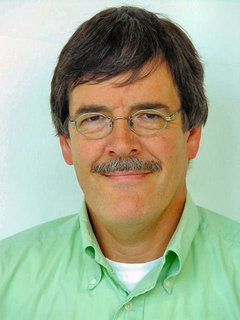
11 February 2014 Passing of Hans Reiff
The Board of the Harry Otten Foundation regrets to announce that our Chairman, Hans Reiff, passed away on 28 January, 2014 after a sudden illness. Hans was a remarkable man and leader of the Harry Otten Foundation since its beginning in 2011. We will miss his leadership and kind and friendly personality, and extend our very best wishes to his family and colleagues.
1 January 2014
Farewell Jill, Welcome Tanja
Due to personal circumstances, one of our founding Board Member Jill Peeters resigned from the Harry Otten Foundation Board of Directors on 31 December, 2013. Jill was a valuable link between the Board and the public broadcasting community. She was always full of enthusiasm and stimulated the Board with new ideas. As a jury member for the Harry Otten Prize, she often provided valuable and unique perspectives on the proposals being considered for the prize. The Board wishes her continued success in her career at VTM, the Flemish Commercial Television Station where she works.
We are extremely pleased to announce the new Board member, Tanja Cegnar, who will begin serving on 1 January 2014. Tanja works for the Slovenian Environment Agency, which incorporates also the Slovenian Meteorological Office. She presents the weather at the national television station in Slovenia. For many years she has coordinated the activities of the media team of the European Meteorological Society. She brings wide experience with the environmental and weather forecasting and broadcasting communities, and she will help the Board with the publicity that needs to be generated for the prize.
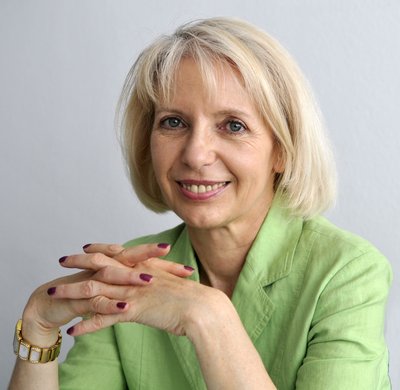
11 September 2013
Harry Otten Prize for Innovation in Meteorology awarded for the first time
Idea to use “Social media for meteorological prediction and information” receives 25,000 Euro
The Harry Otten Prize for Innovation in Meteorology has been awarded for the first time during the Annual Meeting of the European Meteorological Society currently taking place in Reading (UK). Harry Otten announced that the jury has decided that Karolina Stanisławska with her idea “Social media for meteorological prediction and information” has won the prize which is endowed with 25,000 Euro.
The idea “Social media for meteorological prediction and information” proposed by Karolina Stanisławska is about constructing a meteorological system based on the information extracted exclusively from social media content. The system would be a service providing crowdsourced information about actual weather conditions, identification of hazardous weather events and reaction of people to weather information.
Karolina was born in Poland and graduated in computer science at the Poznań University of Technology in 2011. She is currently working as a researcher in climate modelling and greenhouse gases topics for the Finnish Meteorological Institute (FMI) and as a programmer for improving point forecasts for Institute of Meteorological Research (IMR) in Iceland.
The winner of the prize has been selected out of three finalists. The other two finalists received 2,500 Euro for the following ideas:
The “Global Weather Alliance - the WeatherShare service - wxshare.org” presented by Karl H. Eggestad is a free and open video and audio clip and image material service specifically targeted for the worldwide weather broadcasting community.
“Forecasting and Mapping Ice Thickness for Ice Skating on Natural Lakes and Canals” presented by Gert-Jan Steeneveld, Bert Heusinkveld and Kevin Damman aims at improving the quantitative forecasting of ice growth and communicating this in a fast way to the general public.
Overall the jury has received 19 applications for the prize mainly from different European countries and the USA. The Harry Otten Prize is awarded every two years. More information including the full abstracts of the finalists is available on this website.
Hans Reiff, Chairman of the jury: “Karolina’s idea is highly innovative with significant potential benefits to society. These benefits include both use of people to provide weather data and information to meteorologists through the social media as well as information on how society reacts to weather information and forecasts from meteorologists.“
Harry Otten, Founder of the Harry Otten Foundation: “I am delighted that the Prize has been awarded to such an innovative proposal. I hope that the Prize helps to put her idea into practice.“
Pictures from the EMS Annual Meeting 2013 - Awards Ceremony
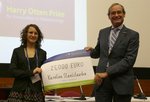 |
 |
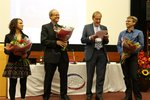 |
11 June 2013
The jury has selected the finalists for the 2013 prize round. They will present their idea at the Annual Meeting of the European Meteorological Society (EMS) on 10th of September 2013 in Reading. There will be a special session for these presentations at 16.30 in room 102. The finalists are:
- KH Eggestad: Global Weather Alliance - the WeatherShare service - wxshare.org (Abstract)
- K Stanisławska: Social media for meteorological prediction and information (Abstract)
- GJ Steeneveld, B Heusinkveld, and K Damman: Forecasting and Mapping Ice Thickness for Ice Skating on Natural Lakes and Canals (Abstract)
After the presentations the jury will make a decision about the prize winner. The prize will be handed over during the awards ceremony of the EMS Meeting on 11 September 2013.
10 March 2013
The submission deadline to send applications for the 2013 Harry Otten Prize has passed on March 15th 2013. The jury thanks all participants and is now evaluating the proposals. For more information about the further steps please consult the timeline.
15 October 2012
Applications to win the price can now be sent through this website. The application form will be available until 10 March 2013.
12 September 2012
At the EMS Annual Meeting in Lodz it was announced that the jury decided to have no prize winner this round. However, there were two honorable mentions and a presentation on what the jury understands as innovative ideas.
Pictures from the EMS Annual Meeting 2012 - Awards Ceremony
15 January 2012
The submission deadline to file applications for the Harry Otten Prize has passed on January 15th 2012. Within four months 12 applications were received. The jury thanks all participants and is now evaluating the proposals.
15 September 2011
Applications to win the price can now be sent through this website. The application form will be available until 15 January 2012.
12 September 2011
The Harry Otten Prize is introduced within the Opening Ceremony of the ECAM / EMS 2011 conference in Berlin by Hans Reiff, chairman of the board of the Harry Otten Foundation. You can see the introduction in a video stream, starting at 1:30.
19 June 2011
The final rules of contest and guidance of which ideas could won the prize have been published on the website. Applications are possible from September 2011 onwards.
13 May 2011
During the celebrations of the 25th anniversary of Meteo Consult and the retirement of Harry Otten the Foundation and the Harry Otten Prize were announced.
12 May 2011
The board of the Harry Otten Foundation has met in Wageningen, The Netherlands for its first meeting. Many decisions have been made about the detailed rules of partipication.

